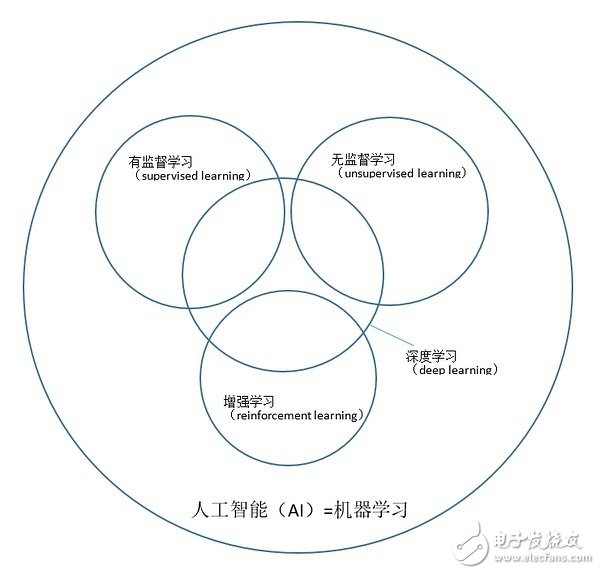December 29, 2016, probably another day that will go down in history. The name is SkyNet, oh no, it is the "Master" Go AI, the first blood wash on humans.
On the first night of Yucheng, Master won the first ten battles. On the second day, he swept the first person in South Korea, Park Ting-soo, and the world's first person, Ke Jie. The scores were 2 to 0. On the third day, Chen Yaozhen, Jiu Duan and Jin Tingxian Fan Tingyu's Jiu Duan, Qi Ting Jiu Duan and Tang Wei Xing were successively dismissed; followed by Guli, Shi Yue, Jin Zhixi and Jing Shan Yu Tai; on January 4, Mr. Nie Weiping lost 7-and-a-half. The final record, Master 60 wins 0 minus 1 level (the flat game is because of the drop)
Since then, ArTIficial Intelligence (AI), the buzzword that has been in full swing in 2016, has once again spread throughout the streets. People are immersed in the worship, panic and fear of AI. However, as the author of the melons, I am thinking about a question: If DeepMind is not ventilated with chess in various countries, how can the whole event go so smoothly and be so compact in time? ? All the important world masters have freed up time in just a few days, and it is a bit unbelievable if they are not planned and organized in advance. Since the birth of AlphaGo in March, DeepMind has not appeared in the circle for 9 months, probably it feels the pressure of marketing.
In fact, in 2016, under the leadership of the Alpha dog, the AI ​​industry created a commotion inside and outside the circle: In March, in addition to the well-known AlphaGo event, Kai-Fu Lee’s article on the annual salary of Dr. AI 200w+ US dollars was screened. In April, Google's famous deep learning framework TensorFlow released a distributed version; in June, Prisma was launched, and it was a smash hit; in August, Google released the deep learning NLU framework SyntaxNet; in September, Google launched a deep learning-based machine translation Sony wrote two songs with artificial intelligence; in October, Microsoft announced that speech recognition reached the human level; in November, computer vision academic Daniel Li Feifei entered the industry in the sea; in December, DeepMind announced DeepMind Lab open source at the NIPS16 conference. Everything is under the headlines of the major media, beginning with [heavy], and it has touched the nerves of the masses of people who are eating and drinking again and again - but these achievements are actually far away from our lives.
In the history of technology, there has never been any technology. Before its large-scale real application, there was a marketing campaign that lasted for a year or even a few years. On top of this turmoil, the AI's several-year-old campaign has pushed people's expectations and fears to a historical apex, and its real application has been a distant node. It is time to calm down and review the marketing history of AI. .
First, some concepts and historyThere are several concepts that need to be clarified first, because I found that under the indiscriminate bombardment of today's media, there are a large number of AI civil sciences that can't distinguish concepts like "artificial intelligence," "machine learning," and "deep learning." Relationships (for example, 90% of people I know who are not from the class think that machine learning = deep learning). Of course, the meaning of these concepts has always been "advance with the times", but the academic world still has a relatively unified and reasonable understanding, which can help us to explain the problem. The following picture depicts the relationship between the most important concepts.

The buzzword of "artificial intelligence" is often given different meanings because of the demand for marketing or news reporting. Its extension is sometimes equivalent to "machine learning" and sometimes not equal, so the equivalent of the outer circle is not completely accurate. However, these "AIs", which were widely discussed in 2016, can be considered to be basically machine learning. The four small circles inside are the four concepts of academic definite extension, representing the four most important problem areas at present, and they are clear key concepts.
Supervised learning - let the machine observe some input and tell the machine what output it should produce under these inputs. The machine learns a model from this data, and when it is given new input, it can predict what output should be produced based on the model. For example, if the machine sees a picture, it can determine which category the object in the picture belongs to.
Unsupervised learning—allows the machine to observe some inputs without standard output, allowing the machine to summarize the statistical characteristics of the input data and generate meaningful outputs. For example, automatically group a large number of articles into similar categories, and for example, give the computer a picture of some puppies and kittens, and let the computer automatically generate some new (similar but different) puppies and kittens.
Vacuum Cleaner Brushless Motor-BLDC
Vacuum Cleaner Brushless Motor-Bldc,Brushless Motor Cordless Vacuum Cleaner,Brushless Motor Vacuum Cleaner,Vacuum Cleaner For With Brushless Motor
Zhoushan Chenguang Electric Appliance Co., Ltd. , https://www.vacuum-cleaner-motors.com